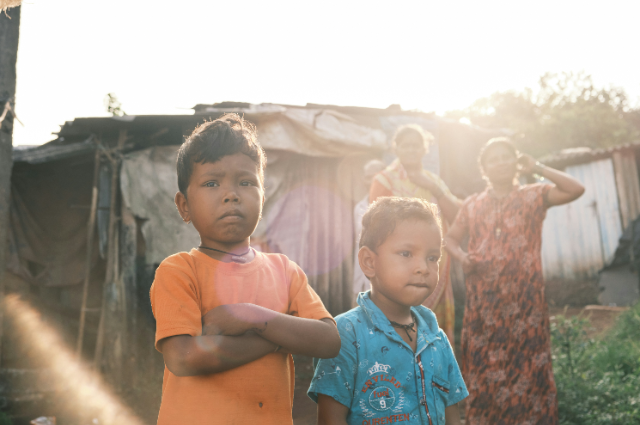
Photo by Abhi Biswas on Unsplash
Introduction
India, renowned for its cultural richness, fast-paced economic growth, and immense diversity, also harbors stark contrasts that define the lives of millions of its citizens. Beneath the gleaming skyscrapers and lively urban hubs lies a reality that often goes unnoticed—the lives of those in the slums. The term "slumdog," popularized by the film Slumdog Millionaire, brings to light the struggles, hopes, and resilience of people living in these challenging environments. This article provides a raw look at the daily lives of India's slum dwellers.
The Emergence of Slums in India
Slums are a consequence of rapid urbanization and the movement of people from rural areas seeking better opportunities in cities like Mumbai, Delhi, Kolkata, and Chennai. As these cities grew, so did the influx of migrants, leading to overcrowded urban spaces. With few affordable housing options available, many people ended up living in informal settlements, or slums.
These slums are often marked by a lack of basic services such as clean water, sanitation, healthcare, and education. Residents, who typically work in low-wage or informal jobs, struggle to survive in conditions far removed from the comfort and stability of middle-class urban life.
Everyday Life in the Slums
Life in the slums is a daily struggle. Overcrowded and unsanitary conditions lead to widespread health issues, with diseases like tuberculosis, dengue, and cholera being common. Children growing up in these areas face numerous hurdles, including malnutrition and limited access to quality education. Despite these challenges, slum communities often display remarkable resilience and a strong sense of community.
In many slums, residents have formed close-knit communities, supporting each other through the difficulties of daily life. These informal networks are crucial, with neighbors often sharing resources to meet immediate needs. Women, in particular, play a key role in maintaining these networks, balancing multiple responsibilities both at home and in the workforce.
The Fight for Dignity and Rights
A significant challenge for slum dwellers is the lack of secure housing. Many live under the constant threat of eviction, as land is sought for development projects. This insecurity makes it difficult for residents to improve their homes or access essential services.
Despite these obstacles, slum dwellers have not remained silent. Over the years, grassroots movements have emerged, advocating for better living conditions, secure housing rights, and access to basic services. Organizations like the National Slum Dwellers Federation (NSDF) and SPARC (Society for the Promotion of Area Resource Centres) have been instrumental in organizing these communities and negotiating with authorities for improved living conditions.
Government and NGO Efforts
The Indian government has launched several initiatives to address the challenges faced by slum dwellers. Programs like the Pradhan Mantri Awas Yojana (PMAY) aim to provide affordable housing for the urban poor, including those living in slums. However, the effectiveness of these programs is often hindered by bureaucratic delays, corruption, and a lack of political commitment.
Non-governmental organizations (NGOs) have also played a crucial role in supporting slum communities. These organizations often work directly with residents, providing healthcare, education, and job training. In many cases, NGOs fill the gaps left by government programs, helping to ensure that slum dwellers receive the support they need.
Signs of Hope
Despite the difficulties, there are success stories that offer hope. In several cities, slum upgrading programs have significantly improved living conditions, providing better housing, access to services, and overall quality of life. These initiatives, often carried out in collaboration with NGOs and the private sector, show that with the right approach, it is possible to break the cycle of poverty and hardship.
The story of India's slum dwellers is one of strength and determination in the face of adversity. While the challenges they face are immense, so too is their resolve to create a better future for themselves and their children. With continued efforts from the government, civil society, and the private sector, there is hope that the lives of millions of slum dwellers can be transformed, leading to a more inclusive and equitable India.
Conclusion
The term "slumdog" may have gained popularity through cinema, but it represents a reality far from glamorous. It speaks to the millions of Indians who navigate the harsh realities of slum life every day, armed with little more than their resilience and hope. As India progresses towards becoming a global economic leader, it must also confront the deep inequalities that persist within its borders. True progress is not just measured by skyscrapers and highways but by the upliftment of those who have long been left behind.
By recognizing and addressing the challenges faced by slum dwellers, India can ensure that its growth story is one that is inclusive, compassionate, and just.
